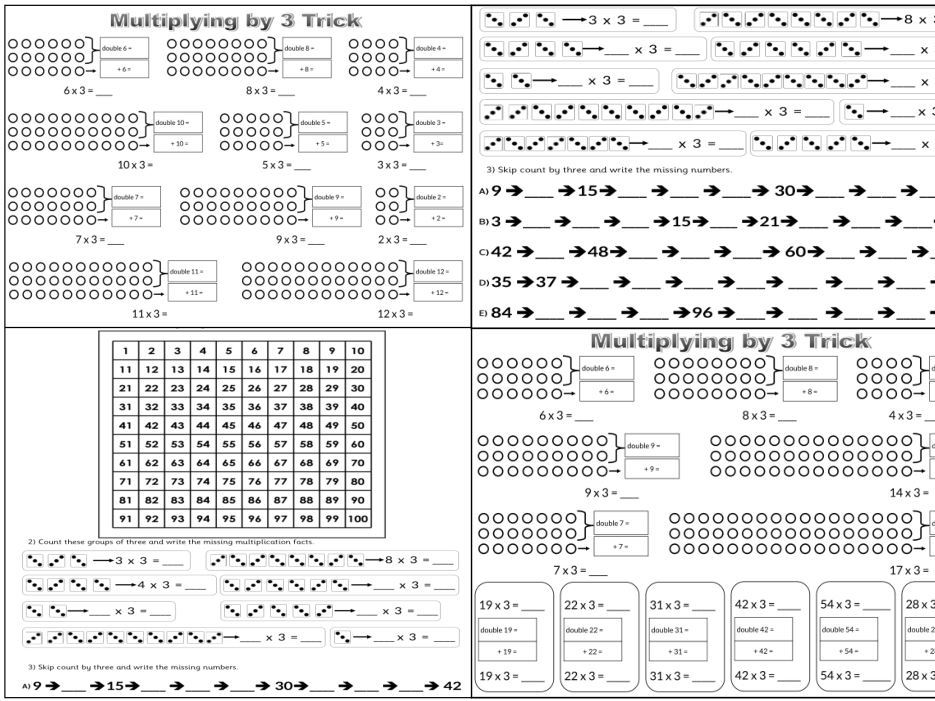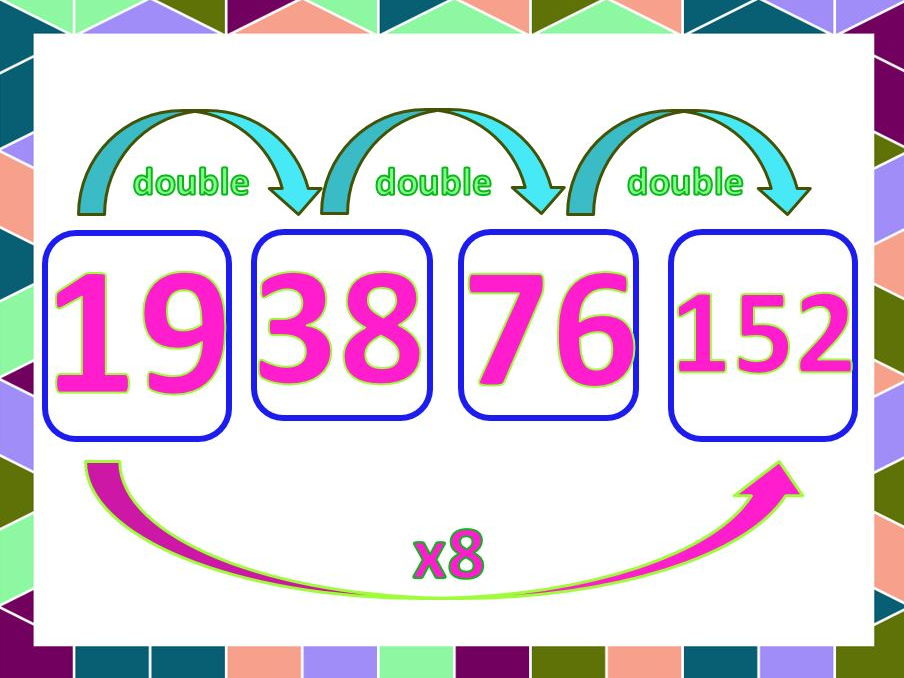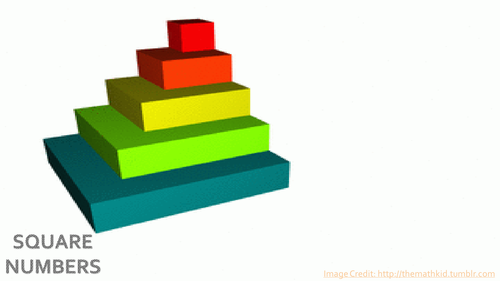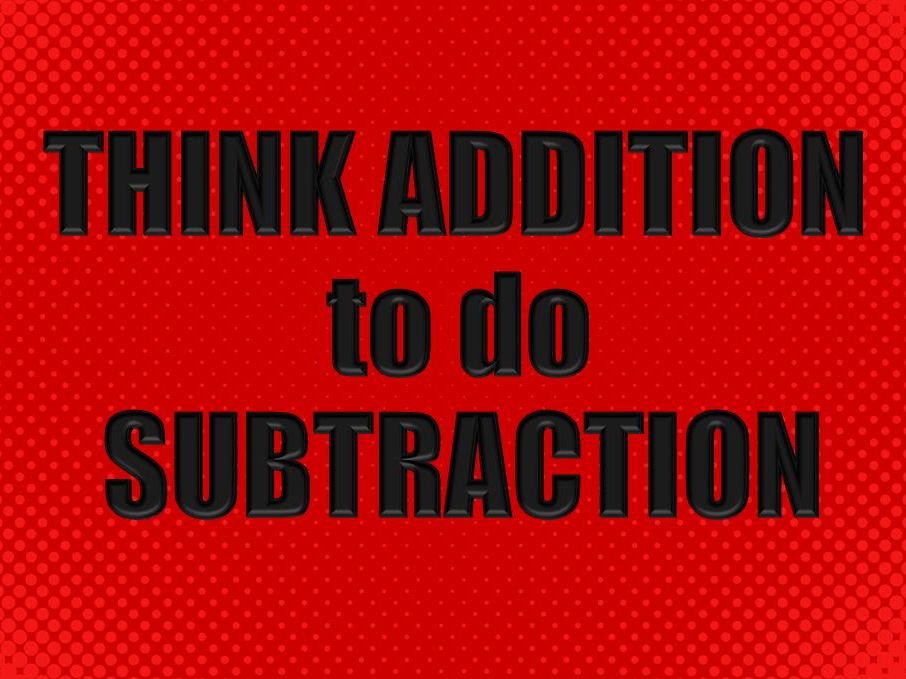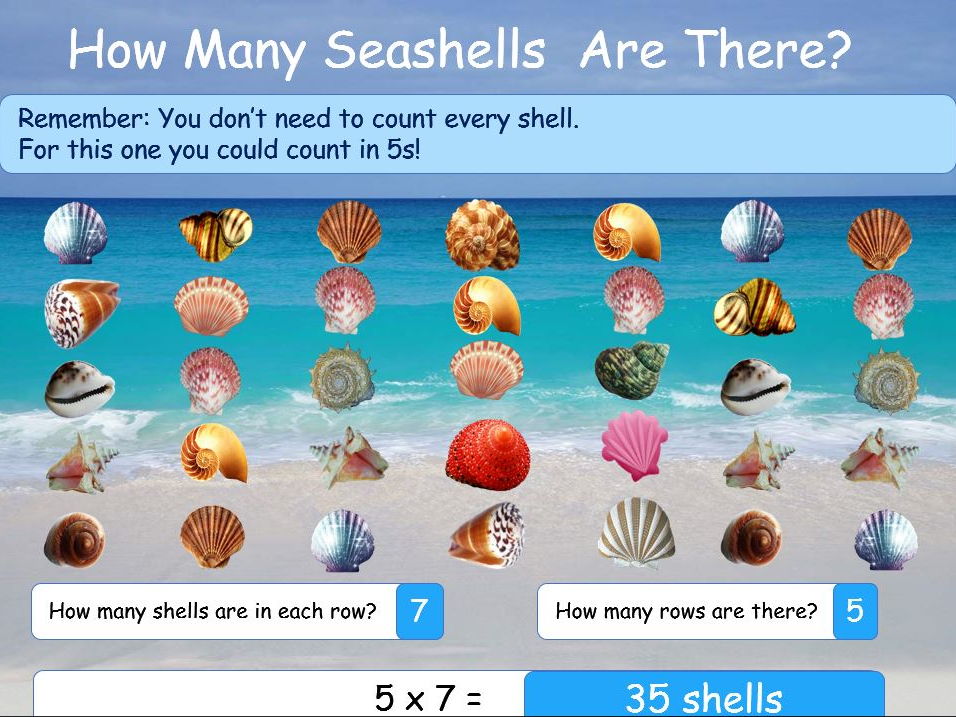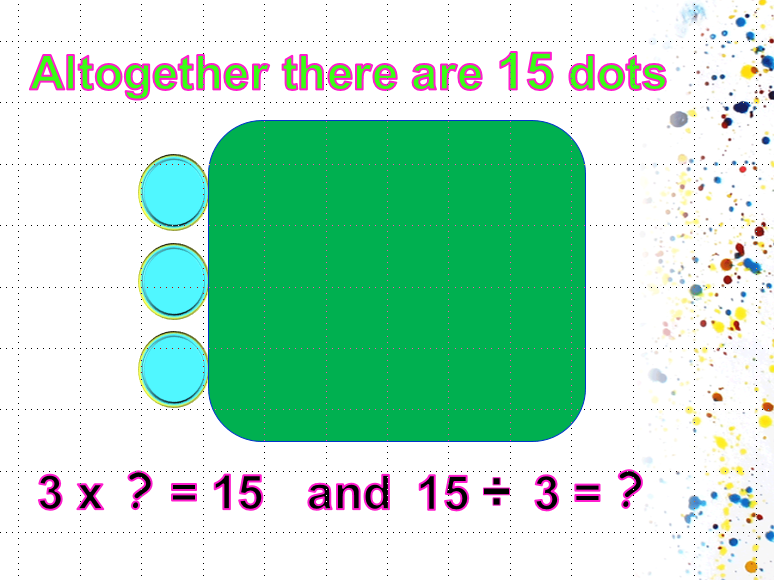362Uploads
1678k+Views
2327k+Downloads
Mathematics

2 Digit by 1 Digit Multiplication
Grid Method / Place Value PowerPoint uses arrays and smiley faces to show the mental multiplication strategy of using place value and knowledge of multiplication to work out a 2-digit number by a 1-digit number - with exchange (such as 8 x 35, 9 x 33 etc.).
No text to read or get distracted by.
12 examples which build from 4 x 18 & 3 x 22 on the first two slides up to 9 x 33 & 8 x 83 on the last two slides.
All slides follow the same animations:
*Array and multiplication problem is shown.
Confused smiley bounces in (teacher explains that if you don’t know your 83 times table you’re going to be confused)
*array changes to show place value calculations.
*Confused face is replaced by a happy face as he can now do the multiplication problem.
12 examples clearly help grade 3,4 or 5 students master and understand this important skill.
With matching differentiate worksheets for multiplying 2-digit number by a 1-digit number.

Division and Multiplication Worksheets
Differentiated worksheets to help with connecting division and multiplication.
Arrays hidden behind a clue - 3 levels LA x2 facts / MA x2,x3,x4 facts / HA x3,x4,x6,x9 facts.
colour match worksheets - fill in each fact. Then use the same colour to show the number facts that belong in the same family. All fact families from x2 to x10.

Divide a 2-digit by a 1-digit Number Year 3
Master division with remainders! These 8 visual worksheets use arrays to teach year 3 students how to divide 2-digit numbers by 1-digit numbers, with and without remainders. Students circle groups in the arrays to visualize division and reinforce skip counting, multiples, and remainders. With mixed fact worksheets including sums with and without remainders.
Aligned to White Rose Scheme Step 9.
Another great year 3 divison resource: Division Part Whole Models Partitioning

Times Tables PowerPoint (Times Two, Times One and Times Zero)
Made for my grade 3 class who are just starting to formally learn their times-tables.
Very visual resource using arrays with dots, hundred charts, step counting and various sum flashcards.
PowerPoint activity/presentation progressing in this slide order:
Counting in steps of two up to 120 from 0.
Count to 24 in steps of 2 with array being built.
100 square count in steps of two with pattern being revealed (2 sec each step).
100 square count in steps of two with pattern being revealed (1 sec each step).
Double the number with numbers in random order (doubling function in-out machine design).
2 times table with sum and array in order.
2 times table with sum and array turnaround in order.
2 times table with sum but no array
2 times table with sum and array out of order.
Answer shown and student to give sum.
Also included are the x0 and x1 timetables. Often overlooked when teaching multiplication, but essential to grasping a true understanding.
First slide is ‘times zero’ times table and shows a fixed golden zero with sum twisting in and out.
Emphasizing the rule that;
“When you multiply a number by zero, the answer is always zero”
Second slide is ‘times one’ times table and shows the multiplicand (the number being multiplied) emerging from itself and sliding over to the product (the answer)
Emphasizing the rule that;
“Any Number Times One is that Number / 1 x anything = itself”

Three Times Table Worksheets
Three times table multiplication worksheets.
Differentiated three ways.
Three times table trick worksheets with arrays.
Skip counting by 3s worksheets with hundred square, groups of dice, skip counting practice.
Sale

Mental Multiplication Strategies
8 Mental Strategies for Multiplication
These thoughtfully made PowerPoints are carefully designed to help students grasp commonly taught multiplication strategies ( and tricks) for x0, x1, x2, x3, x4, x5, x8, and x9 times tables. Ideal for years 3 and 4, but also helpful for year 5 and 6.
To multiply by 2 = double the number
To multiply by 3 = double the number and add a set
To multiply by 4 = double, then double again.
To multiply by 5 = multiply by 10 then halve
To multiply by 8 = double-double-double
To multiply by 9 = use your fingers/ the digits of answer added = 9
To multiply by 0 = the answer is always 0
To multiply by 1 = the answer is always that same number.
All the PowerPoints include examples to 12 and extensions to large multiplications to show that the strategy really comes in useful for doing tricky mental multiplication.
Please see video for a taster.
All slide animations are activated when you click the mouse, giving teacher and student thinking and explaining time. Video is sped up to get through the examples.
Includes some supporting, differentiated worksheets
Sale

Doubling-and-Halving Strategy to Multiply (with Arrays)
A PowerPoint which introduces the ‘Doubling-and-Halving Strategy for Multiplication’.
This PowerPoint uses an array to show the multiplication strategy of doubling one factor and halving the other factor to help to work out some multiplication problems. Doubling and halving is therefore related to thinking that ‘restructures’ an array to make it more manageable to multiply (e.g. 3 × 18 = ___ can be rewritten as 6 × 9 = ___).
Very visual resource which helps students see that the total number of circles in an array (the product) stays the same when an array is cut and rearranged.
No text: so recommend that the teacher walks through the first couple of example slides and then students verbally explain the following examples to their peers.
Order of animations:
Tricky array and sum is shown.
Confused smiley bounces in. (explain here that if you don’t know your 15 times table etc. this could be hard)
Scissors appear and cut the array - array restructures into simpler array (double of one factor/half of the other)
New corresponding sum appears - click & answer is shown
Array restructures to first formation and tricky sum is shown again
As the total number of circles has remained the same throughout the sequence the answer should be obvious :-)
I use it alongside other strategies so that it is presented as an option for mental computation involving multiplication.
Sale

Clockwise and Anticlockwise Turns
Position, direction and movement, anti-clockwise, clockwise, fractions of turns
*Review clockwise and anti-clockwise turns by means of animated images of clocks and 11 other fun animated revolving images.
*Learn quarter, two-quarter/half, three-quarters and four-quarters/whole fractions of a circle
*simple following instruction game to review clockwise and anti-clockwise quarter, half, three-quarter and whole turns prior to or after watching a birds-eye animated image of a man standing on a divided circle making animated turns.
*In pairs practice turning a pencil clockwise and anti-clockwise quarter, half, three-quarter and whole turns prior to or after viewing an example.
PowerPoint whole-class teaching resource
Two page worksheet (in word & PDF format) using the same pencil turns image to consolidate learning.
Bundle Sale

Mental Subtraction
Two resources (3 PowerPoints and lots of worksheets) to help learners really understand mental subtraction.

Pi Day Math Day Magic Numbers
Pi Day / Math Day lesson activity.
Challenge your students to work out the mystery magic number and/or to use the given magic number to answer the questions
Mystery Magic Number Worksheets
Most of the answers to the questions on the worksheet are correct. However, 4 answers are wrong - colour these incorrect answers/boxes red. Use the 11 correct clues to work out the magic number.
When you think you know the magic number write it in the star.
Finally, using the magic number work out the answers to the 5 questions on the bottom row.
11 differentiated worksheets with answer sheets given.
Use the Given Magic Number to answer the questions worksheets
4 differentiated worksheets - teacher or learner writes a magic number in the star;then answer the 20 questions below using the magic number.

Square Numbers Introduction
Visual introduction to square number patterns . Useful as a visual introduction to exploring square numbers and/or as a lesson starter.
A square is slowly built by adding the next odd number of squares to the first to make a bigger square (number).
3 animated slides (don't bore your students too much, just use 1 a lesson)
*Slide 1 uses a growing pattern of odd numbers in an addition sentence (underneath the square) to create square numbers.
*Slide 2 uses the above plus the matching multiplication sentence.
*Slide 3 uses the visual and only the multiplication sentence.
I like to show slide 1 with just the addition sentence first off and impress my students with my quick fire maths skills ;-) "1+3+5+7+11+13+15+17+19+21+23 = 135". The following day I'll teach them the trick of multiplication. A few of my higher ability will be able to answer the addition sentences on their own at the end of a lesson.
You'll need a bit of patience as the squares reveal themselves.
Hope students around the world enjoy it (?) and that it makes multiplication that little more understandable.
Please rate and comment politely, all my resources are shared freely.

More or Less Number Line Up or Down
Find x more than using the number line, then write the addition sentences. Find x less than using the number line, then write the subtraction sentences.
Start number given. Students then fill in + or - and the other numbers to make the number sentences.
Please rate and comment.

Number Bonds to Five
5 + 0 = 5, 4 + 1 = 5 ....I'm sure you know the rest?
Inside the table draw &'add&'; the required number of circles to make a total of five. Then fill in the addition sentence below the circles. Number bonds to five. Addition.
PLEASE RATE AND COMMENT

Mental Strategy for Subtraction
Think Addition Strategy to do Subtraction mental math 2 Presentations & 8 Worksheets -
Think-addition-to-do-subtraction is a mental math strategy that introduces students to the concept that there is an inverse relationship between addition and subtraction. You think of an addition fact in the same fact family. For example, you can solve 10 - 4 = ? by thinking 4 + ? = 10 and knowing that 4 + 6 = 10.
I made these two PowerPoints to help my grade 3 class (ages 8 & 9) with the think-addition strategy. Many of my students this year are slow to recall number-bond facts, and therefore this has hopefully helped them to see the inverse relationship between addition and subtraction. Could well be used in earlier grades.
1 PowerPoint of 25 sums with matching circles being added and taken away: mainly for subtraction sums between 10-20, but also has 4 slides for facts to 10.
Slides can of course be hidden and order rearranged.
2nd PowerPoint of 20 larger sums with no circles: variety of examples within 100.
Comes with seven subtraction think addition worksheets in PDF format of increasing difficulty, and 1 editable microsoft word worksheet.
Sale

Division and Multiplication / Combining and Sharing Objects
Input-Output Tables to help relate multiplication and division.
PowerPoint focuses on building a connection between multiplication and division operations using an active model to reinforce the connection between the two operations.
Visual of the relationship between division and multiplication using input and output tables to show that division is sharing and multiplication is combining.
The PowerPoint is designed to encourage students to combine equal groups of clipart images to make a total (multiplication), as well as share a collection to form equal groups (division).
The PowerPoint uses a variety of public domain clipart images to act out a multiplication or division problems to encourage students to determine the total and reverse the action to determine the quotient and vice versa. Your students can make up little stories to help them understand each operation.
x3/÷3 & x4/÷4 Facts used (28 slides).
Includes differentiated worksheets for 3’s and 4’s facts
Bundle Sale

Multiplication Beginners Pack
A set of carefully designed resources to introduce multiplication to children, and to help them to progress to trickier skills.
Helps to clearly introduce repeated addition, multiplication as groups and multiplication as arrays.
Includes 8 large PowerPoint files all with menu pages and clear, careful, fun and logical slides and numerous activity sheets (worksheets, cut & stick activities, a booklet etc.)
(Nearly) Everything you’ll need to help young students understand and get to grips with the concept of multiplication.
Total price of bundled items : £22.40

Amazing Arrays
The seaside themed PowerPoint explains and shows what an array is, with fun seaside and beach illustrations, arrays using circles, clear examples, top tips for saving time e.g. counting in 2s, 5s and 10s.
(Please see video for a 8 second per slide run through of the PowerPoint, actual PowerPoint is far smoother and controlled via right click to begin each animation, giving time for explanations and children to think and answer)
Also included a fun, introductory array cut-match-stick worksheet (2 version: one at a lower level and one slightly harder)
Sale

Three Times Table Trick
Three rimes table trick with arrays to help with the three times table multiplication strategy .
This clear, step-by-step and helpful PowerPoint will help students learn that multiplication by 3 can be done by doubling and adding another set.
e.g. to calculate 3 × 14:
first double 14 getting 28, then add another 14, (to get 3 times 14) which is 42.
21 Examples are presented (from 3 x 2 up to 3 x 21) in order, or from a hyperlink menu.
Each slide shows the sum and a confused face,
Then two lines of the matching array (showing the doubling array)
Then another set (another line of the array) is added
Whilst the matching thought process is shown with clear sums.
Finally everything apart from the x3 sum and array dissolve out, leaving just the sum, the answer and the x3 array.
Each part of the thought multiplication strategy is presented when you click the mouse, giving students time to work out and explain each step.
Includes 3 level differentiated mathcing sylte worksheets and skip counting x3 worksheets.
Also see my Multiplication Strategies pack which includes this trick and other common multiplication strategies
https://www.tes.com/teaching-resource/mental-multiplication-strategies-11756501

Division as Inverse Multiplication
Inverse multiplication division for fours facts and eights facts.
Division as inverse of double-double (dividing by 4) and halve, halve, halve (dividing by eight).
Also with input-output table worksheet to use with ones blocks for 3’s and 4’s facts.
Plus multiplication - division colour matching for all facts.
Differentiated worksheets (LA/MA/HA)
Sale

Division Array PowerPoint - Think Multiplication Strategy
An introduction of the ‘think multiplication strategy’ to help with division.
An animated, interactive PowerPoint presentation with arrays of dots to help students visualize related multiplication and division facts.
A partially covered array showing only the number of rows in an array, but not the number of dots in each row is shown, along with a matching fact statement (e.g. “Altogether there are 40 dots”)
Students are encouraged to give the multiplication sentence AND related division sentence using the information shown (total number of dots & number of rows/groups) that helps work out the array proportions. e.g. 5 x ? = 40 and 40 ÷ 5= ?. 14 example arrays.
Includes 3 level differentiated division / multiplication worksheet in same style, plus colour matching facts for all tables x2-x10





